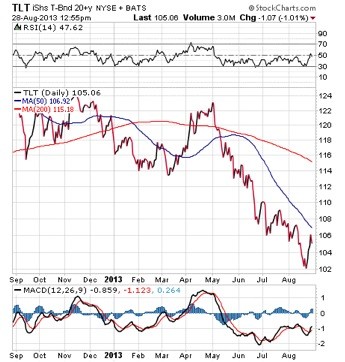What is the Flight to Quality
Post on: 17 Июнь, 2015 No Comment

Dmitry Mordvintsev / E+ Collection / Getty Images
In the past few months, bond investors may have noticed that bad news regarding the Russia-Ukraine crisis is almost always a positive for U.S. Treasuries. Many people may be wondering why this is — shouldn’t negative headlines from the geopolitical front also be harmful to financial assets?
In many cases, it is. Stocks and higher-risk assets typically exhibit weak price performance when the headlines are unfavorable. However, U.S. Treasuries — due to their status as one of the lowest-risk investments in the world (if held until maturity) — actually benefit when the investment backdrop becomes unstable. This phenomenon is known as the flight to quality or flight to safety.
What is the flight to quality, and how can you profit when it takes place?
The flight to quality is the dynamic that unfolds in the markets when investors are more concerned about protecting themselves from risk than they are with making money. During times of turbulence, market participants often will gravitate to investments where they are least likely to experience a loss of principal. These safe havens are typically the government bonds of the largest industrialized countries, particularly the United States.
At the simplest level, the flight to quality is an investor saying to him or herself, “Do I feel comfortable taking risk, or am I better keeping my money safe right now?” If enough people opt for the latter, the result is typically a rally in U.S. Treasuries.
The Flight to Quality at Work
Let’s look at an example. In mid-2011, the European debt crisis took center stage as the key driver of financial market performance. Investors became worried about a worst-case scenario for Europe – a potential default by Greece or one of the region’s other smaller countries, and/or the collapse of the euro as the region’s common currency. The result was a sell-off in stocks, commodities, and higher-risk areas of the bond market, as investors moved cash out of assets likely to be hurt by negative headlines. At the same time, Treasury prices staged a mammoth rally and yields fell to record low levels. For example, one-year U.S. Treasuries spent much of the year’s second half trading with a yield below 0.20%, and on a few occasions the yield fell as low as 0.09%.
This indicates that investors were willing to hold a one-year investment that paid virtually nothing – and was far below the rate of inflation – just for the privilege of keeping their money safe from the turmoil in the global economy. This is the flight to quality in action.

How do Higher Risk Bonds Perform in the Flight to Quality?
For the bond market, this flight to quality trade has a flip side. Higher-risk segments of the market also tend to sell off when the news turns bad. High yield bonds. emerging market debt, and lower-rated bonds in the investment-grade corporate and municipal bond markets also tend to lose ground in sympathy with stocks.
The Flight From Quality
The flight to quality can also move in reverse. When positive news flow puts investors in a good frame of mind, the result is typically stronger performance for the riskier segments of the markets and underperformance for U.S. Treasuries.
A prime example is the end of the U.S. financial crisis in the first quarter of 2009. Believing that the era of bank failures and bailouts was past, investors staged a massive move out of Treasuries and into stocks. As a result, the yield on the 10-year Treasury rocketed from about to 2.5% to 4.0% in just three months as its price plunged – a classic flight from quality. (Keep in mind, prices and yields move in opposite directions .)
For individual investors, the most important takeaway from this discussion is that it isn’t accurate to view “the bond market” as a hiding place in times of trouble. In fact, it is usually only the highest-rated securities (such as Treasuries) that are seen as being least likely to default that perform well when risk appetites evaporate. As a result, be sure you understand what type of bond or bond fund you own before you assume you’re safe from negative headlines.














